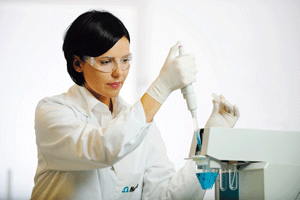Monitoring of Uranium in Drinking and Mineral Water

Complete the form below to unlock access to ALL audio articles.
Uranium is radioactive, toxic and a suspected teratogen. While different national health authorities prescribe limits in drinking water ranging from 0 up to 10 µg/L, the World Health Organization (WHO) recommends a concentration limit of 15 µg/L.
 The AdCSV method for the voltammetric determination of the uranium content is based on complexing U(VI) with chloranilic acid (CAA) at a pH between 1.8 and 2.5. After preconcentration of the uranium-chloranilic acid complex at the working electrode, the uranium content can be determined down to the ng/L range by using the differential pulse measuring technique (DP). The determination of uranium(VI) is specific and selective, as the positive deposition potential means that other metal-CAA complexes or organic matrix components of natural waters are either not adsorbed on the working electrode or hardly adsorbed at all.
The AdCSV method for the voltammetric determination of the uranium content is based on complexing U(VI) with chloranilic acid (CAA) at a pH between 1.8 and 2.5. After preconcentration of the uranium-chloranilic acid complex at the working electrode, the uranium content can be determined down to the ng/L range by using the differential pulse measuring technique (DP). The determination of uranium(VI) is specific and selective, as the positive deposition potential means that other metal-CAA complexes or organic matrix components of natural waters are either not adsorbed on the working electrode or hardly adsorbed at all.
The German standard DIN 38406-17 is currently being drawn up based on this AdCSV method. This means that in future the voltammetric determination of uranium can be used as a generally recognized method for monitoring drinking and mineral water in daily practice.

